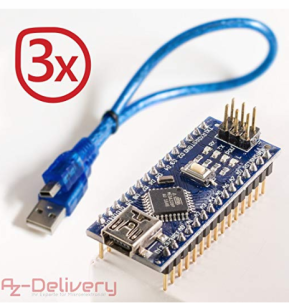
.
.
Grove Beginner Kit for Arduino | SEEEDSTUDIO |
SEEEDSTUDIO asked me through LinkedIn to make a cooperation with them for reviewing a NEW Arduino, the “Grove Beginner Kit for Arduino” product which I accepted. Today I received the stuff which in the next days I will play around a bit and create Blog posts (Tutorials) about it, stay tuned…
FIRST impressions:
I ordered it on 28-07-2020 on the site of SEEDSTUDIO and it arrived on 03-08-2020 @02H58 PM, delivered by DHL. Actually very quick from China to Luxembourg!!
Unpacking my order:
Nice cardboard with lots of TIPS printed on it. The box is sealed with 3 circular glued plastic which I had cut through with scissors, BAD IDEA, as I damaged the cardboard while NOT knowing that the box was meant as a whole playstation as itself (see photos, please)… Here the company could improve please, thanks! My constructive critics! 😉
.
|
Click image, please, to enlarge. |
Click image, please, to enlarge. |
|

. . As long as that glued plastic problem ISN’T resolved, use a sharp cutter to cut off the glued circular plastic as I couldn’t remove it by hand! |
.
Reading the online Manual
Well, NOTHING to say against it, it is well done!! Please check it here below:
There are professional STEP-BY-STEP instructions so you can’t make mistakes!!
.
Getting started
ALL you have to do is to connect the USB-Cable to the PC, Laptop, which is in the right sight of the box (see step 2 in the PIC below please) to start. [Start Text from WiKi] Grove Beginner Kit for Arduino is one of the best Arduino Beginner Kit for beginners. It includes one Arduino compatible Board and 10 additional Arduino sensors and all in one-piece of PCB design. All the modules have been connected to the Seeeduino through the PCB stamp holes so no Grove cables are needed to connect. Of course, you can also take the modules out and use Grove cables to connect the modules. You can build any Arduino project you like with this Grove Beginner Kit For Arduino. [End Text from WiKi]
.
.
Plug and Play Unboxing Demo
The Grove Beginner Kit has a plug and plays unboxing demo, where you first plug in the power to the board, you get the chance to experience all the sensors in one go! Use the button and rotary potentiometer to experience each sensor demo!

- Scroll -> Rotating Rotary Potentiometer
- Select -> Short Press Button
- Exit Current Demo -> Long Press Button
Buzzer and LED module are used for key prompt.
.
Some examples
Please check the pictures below:
.
|
Click image, please, to enlarge. 3
|
Air Pressure/GROVE Click image, please, to enlarge. |
|
|
Air Pressure/GROVE Click image, please, to enlarge.
|
.
My review
Well, I can recommend this product for beginners by 100%!! Up from the beginning beginners can find out HOW things work with just plugging the USB cable to the PC, Laptop, computer. It’s a GREAT way to bring Coding to STEAM students, Maker’s, MakerED and Maker Spaces!
I didn’t yet using the Breakout possibilities, I DON’T overwhelm you with TOO MUCH information, that will GET discussed in next tutorials, BUT looks promising as NO need to plug single cables, ALL done by ONLY one connector!!!
.
Please check the videos below to understand how the GROVE System works.
..
WHERE to order it?
You can GET it here actually (04-08-2020):
..
.

. TIP for Educators, Teachers, Coaches: Let the learners first trying the working examples in the box to discover the possibilities! Later you can make the Breakout and then they can reproduce the Coding examples such as mentioned in the online manual.
|
.
 L’auteur Gust MEES est Formateur andragogique / pédagogique TIC, membre du “Comité Conseil” de “Luxembourg Safer Internet” (LuSI), appelé maintenant BEESECURE, partenaire officiel (consultant) du Ministère de l’éducation au Luxembourg du projet ”MySecureIT“, partenaire officiel du Ministère du Commerce au Luxembourg du projet ”CASES” (Cyberworld Awareness and Security Enhancement Structure).. L’auteur Gust MEES est Formateur andragogique / pédagogique TIC, membre du “Comité Conseil” de “Luxembourg Safer Internet” (LuSI), appelé maintenant BEESECURE, partenaire officiel (consultant) du Ministère de l’éducation au Luxembourg du projet ”MySecureIT“, partenaire officiel du Ministère du Commerce au Luxembourg du projet ”CASES” (Cyberworld Awareness and Security Enhancement Structure)..
The author Gust MEES is ICT Course Instructor, ”Member of the Advisory Board” from “Luxembourg Safer Internet” (LuSI), BEESECURE, Official Partner (Consultant) from the Ministry of Education in Luxembourg, project “MySecureIT“, Official Partner from the Ministry of Commerce in Luxembourg, project “CASES” (Cyberworld Awareness and Security Enhancement Structure). . |
.
Stay tuned for next blog post(s) 😉
.
.
.



















































